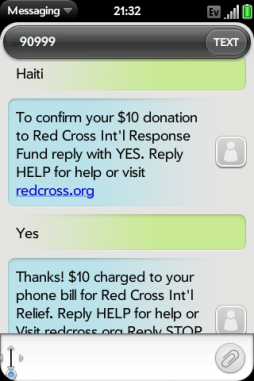research review
Posted by AnneryanHeatwole on Jan 13, 2012
A simple text message can have a big impact. Mobile giving makes it easy to donate almost instantaneously after disaster strikes -- users authorize a mobile donation by texting a keyword to a specific short code, and the donation is then billed to the donor's mobile phone bill, eventually ending up with the nonprofit of choice.
Following the devastating Haitian earthquake of 2010 that left more than 200,000 people dead and more than 1 million Haitians homeless, mobile donations to Haiti totaled more than $43 million -- the first time mobile giving went mainstream in the United States on a large scale.
On the two-year anniversary of the Haitian earthquake, the Pew Internet Project has released "Real Time Charitable Giving," a report that delves into mobile giving and donors' motivations in the U.S.
The report, a collaboration among the Pew Internet Project, the Berkman Center for Internet and Society, the Knight Foundation, and the mGive Foundation, aims to provide a window into the motivations, benefits, and potential pitfalls of mobile giving campaigns.
Drawn from a sample of 863 individuals who made a mobile donation to the "Text for Haiti" campaign, the survey covers why the users gave, how they learned about the mobile donation campaign, how likely they were to share information about their mobile donation, and how likely they were to remain engaged with relief efforts.
| Mobile Donations and Disasters: Lessons from Haiti data sheet 1582 Views |
| Countries: |
Haiti
United States
|

